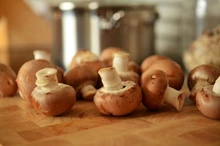
Want to sweeten your foods and beverages naturally? We will tell you about the most popular sweetener that sweetens the food in a naturally delicious way. Yes, we are talking about the natural sweetener - Honey. Honey is an impure and supersaturated sugar solution and a natural, original, sweetener. It has unique (though variable) combination of components.
Honey is produced by six to eleven of the approximately 20,000 species of bees. The bees (most commonly, Apis mellifera) drink nectar from a flower and blend it multiple times with salivary enzymes (diastase and invertase) in their honey sacs. The floral nectar is chemically transformed into honey when the complex sugars are enzymatically broken down into glucose and fructose, and excess water is evaporated.
Interesting Facts of Honey
-
It has been used in food for at least 6000 years, mostly as a sweet source for much of the world’s population.
-
The first written reference to honey, inscriptions on a Sumerian tablet dating back to 2100-2000 BC, mentions honey’s use as a drug and an ointment.
-
Honey has minerals like potassium, sulfur, chlorine, calcium, phosphorus, magnesium, sodium, iron, copper, and manganese. It also has vitamins B and C.
-
The bees are fed honey, not sugar. Sometimes bees are fed sugar in winter.
-
The bees are not given antibiotics.
-
Honey was originally used for therapeutic purposes, as it has antibacterial properties.
-
Honey is also gyroscopic, which means that it naturally attracts moisture.
-
Honey dries out wounds, preventing wounds from becoming infected.
Different Ways of processing Honey
-
Unpasteurized which degrades the enzymes, minerals, and vitamins.
-
Not ultra filtered which removes the pollen and its benefits.
-
Not a blend of different kinds of honey from different countries.
Health Benefits
1. Antibacterial and Antiseptic Quality
Honey is antibacterial and antiseptic. Raw organic honey contains hydrogen peroxide which is released when it comes into contact with moisture. This hydrogen peroxide is both antibacterial and fungicidal. Honey was replaced by antibiotics, such as penicillin and synthetic drugs in the 1940s and 1950s.
2. Rich in antioxidants
The darker the honey, the more antioxidants it has which eliminate free radicals. Honey has a unique antioxidant called pinocembrin, an antioxidant associated with improved brain functioning.
3. Balances Blood Sugar
Consuming raw honey does not allow blood sugar to rise. It allows a healthier and gradual increase in blood sugar levels.
4. Digestion
Honey helps indigestion. It contains natural enzymes that assist the natural process and makes the digestion process easy and simple.

5. Provides a Good Sound Sleep
Take a spoonful of honey before sleeping it will help you get a good night's sleep. Honey provides the body with enough glucose to feed the brain during the night. It also limits the release of stress hormones in the early morning.
6. Healthy Glowing Skin
Honey nourishes skin as it attracts moisture. It is often used in skincare products. It is very effective to apply honey in conditions of sunburn, acne, and eczema.
Honey Colour
Honey color ranges from nearly colorless to dark brown. Its flavor varies from delectably mild to distinctively bold, depending on where the honey bees buzzed. As a general rule, light-colored honey is milder in taste and dark-colored honey is stronger.
Types of Honey
There are more than 300 different types of honey in the United States, each originating from a different flavor and color depending on the blossoms visited by the honey bees. Single varietal honey results when the honey bees gather nectar from the same type of flowers. This process is aided by beekeepers who strategically place their hives in an orchard or adjacent to a single type of flower and then carefully monitor the collection of the honey.
The percentage of fructose, glucose, amount and type of amino acids, and the organic acids vary by a floral source that in turn determines the flavor of honey.
1. Alfalfa
-
Honey from this flower is white or light amber-colored. Is good for everyday use.
-
It is produced extensively throughout Canada and United States from purple blossoms.
-
It has a mild flavor and aroma.
2. Avocado
-
It is darker in color and has a rich but buttery taste. It is used in dressings and sauces. Avocado honey is rich in vitamins, minerals, anti-oxidants and offers many of the same medicinal properties as an Aloe Vera plant.
-
It is collected from California avocado blossoms.
3. Basswood
-
It is derived from the blossoms of the basswood tree and is noted for its watery white color and biting taste.
-
It has a light color and yet strong biting and lingering flavor. It is used for salad dressings and marinades
4. Blueberry
-
It is derived from blueberry flowers. Its color ranges from light amber to amber-colored. It has a full, well-rounded flavor and is great for making sauces and baking.
-
It is produced in New Zealand and Michigan.
5. Buckwheat
-
It has a high level of anti-oxidants. It is considered one of the most valuable honey native to Europe.
-
In comparison to other honey, it contains more magnesium, iron, copper, zinc, phosphorus, nickel, bohrium, iodine, and cobalt.
-
If buckwheat honey is freshly extracted, it has 51.6% fructose, 46.59% glucose, and 0.27% sucrose. There has been established that there is a lot of vitamin C (2.9 – 11.9mg %), B1, B2, and PP.
6. Clover
-
It has a pleasing, mild taste. Clovers contribute more to honey production in the United States than any other group of plants.
-
It is used in wound healing and treating burns, regulating blood pressure, controlling liver issues, regulating cholesterol, providing anti-oxidants and mucus thinner. Thus, eliminates coughing.
7. Eucalyptus honey
-
It varies greatly in color and flavor but tends to be stronger flavored honey with a slight medical scent. It is produced in California.
-
It is good for respiratory, anti-inflammatory, antispasmodic, decongestant, deodorant, antiseptic, and antibacterial.
8. Manuka Honey
-
It is primarily produced in New Zealand, is used as a natural product both internally and topically on the skin. The bees gather nectar from the flowers of the Manuka bush, which is indigenous only to New Zealand.
9. Sourwood Honey
It comes from the sourwood tree and has a sweet and spicy flavor. It is used as table honey and also in glazes.
10. Fireweed Honey
-
There are over 50 types of Fireweed. They help to strengthen the immune system, respiratory system and improve the condition of the body.
-
It is light in color and comes from a perennial herb that creates wonderful bee pasture in the Northern and Pacific states and Canada.
-
Fireweed grows in the open woods, reaching a height of three to five feet and spikes attractive pinkish flowers.
Where to find Varietal Honey
Regional Varietal Honey is available at farmer’s markets and local specialty gourmet stores.
You can also visit The Honey Locator- an online honey search engine at www.honeylocator.com
It will provide you with more information about honey varietals and suppliers.













